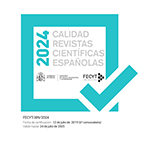Befriending Women in Leadership Roles? The Highest Glass Ceiling, Still Unbroken in Usa.
Abstract
In summer, 2016, feminist scholars in the USA celebrated, as Hillary Clinton became the first woman selected by a major political party (Democratic), to run for president of the USA. They also watched in horror as members of the Republican party chanted at their summer convention “Lock her up!” Everyone agreed that Clinton was highly qualified with thirty plus years of experience working on behalf of women and children in the USA. Concerns expressed were about her trustworthiness. Clinton’s platform was one of unity and inclusion, while the Republican party and their candidate Trump’s platform was one of fear and hate for “others” (non-white Americans). It was depressing during the fall campaign to realize the only reason a woman might be elected president was because the person she was running against was so corrupt and inexperienced, racist, and clearly misogynist. November 9, 2016 brought the USA, and the world, the shock and horror of learning that Hillary Clinton lost the presidential election to Donald Trump, even though she won the popular vote by close to three million more votes. I plan to consider this election as a current example of the horizontal violence that (white) women perpetrate on each other. Through this example, I will offer an extension of my earlier work analyzing the treatment of women faculty in higher education by other women. It seems clear that women still struggle with efforts to befriend rather than perpetrate horizontal violence on each other.Downloads
Article download
License
In order to support the global exchange of knowledge, the journal Res Publica. Revista de Historia de las Ideas Políticas is allowing unrestricted access to its content as from its publication in this electronic edition, and as such it is an open-access journal. The originals published in this journal are the property of the Complutense University of Madrid and any reproduction thereof in full or in part must cite the source. All content is distributed under a Creative Commons Attribution 4.0 use and distribution licence (CC BY 4.0). This circumstance must be expressly stated in these terms where necessary. You can view the summary and the complete legal text of the licence.









